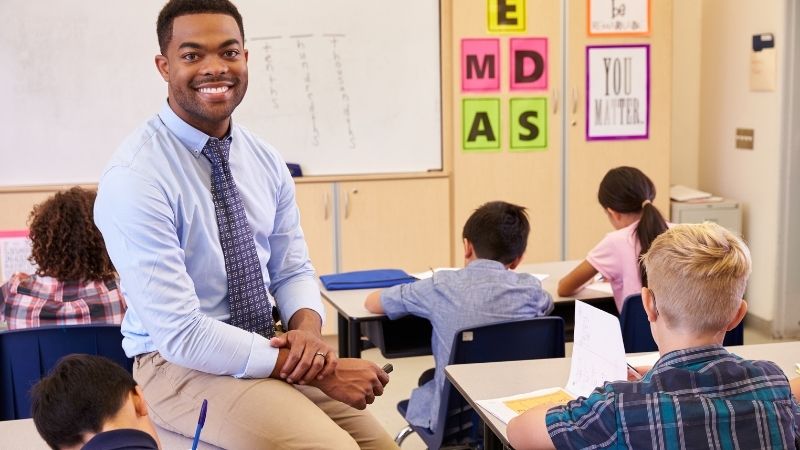
Special education faces numerous challenges that can hinder the successful implementation of inclusive education. These hurdles include:
- Classroom management difficulties
- Limited access to resources
- Staff burnout
- Negative societal attitudes towards individuals with disabilities
- Obstacles related to the inclusion of students with special needs
Addressing these barriers is essential in ensuring equitable educational opportunities for all students.
This article aims to provide insightful analysis and practical strategies to overcome these obstacles, promoting a more inclusive and supportive learning environment in special education settings.
Key Takeaways
- Classroom management challenges: Maintaining a structured and organized learning environment, addressing individual student needs, managing disruptive behaviors effectively, and accommodating diverse abilities and learning styles.
- Lack of resources: Inadequacy of available resources in special education, budget constraints and accessibility issues, insufficient funding for hiring qualified professionals and providing specialized materials, and limited access to assistive technologies and adapted learning materials.
- Staff burnout: The demanding nature of working in special education, high levels of stress and burnout, impact on the mental health and well-being of staff members, and the importance of maintaining a healthy work-life balance.
- Societal attitudes: Stigma and prejudice towards individuals with disabilities, lack of understanding and awareness about diverse abilities and potential, the need for advocacy and awareness campaigns, and promoting inclusive practices and dismantling stereotypes.
Classroom Management Challenges
Classroom management challenges in special education encompass difficulties in maintaining a structured and organized learning environment, addressing individual student needs, and managing disruptive behaviors effectively. These challenges are particularly significant in special education settings due to the diverse range of students with varying abilities and learning styles.
Student engagement plays a crucial role in overcoming these hurdles as it promotes active participation and fosters a positive learning atmosphere. Teachers must employ strategies that enhance student motivation, such as incorporating interactive activities, utilizing visual aids, and providing opportunities for peer collaboration.
Furthermore, effective behavior management techniques are essential to create an environment conducive to learning. Implementing clear expectations, using positive reinforcement strategies, and establishing consistent consequences can help manage disruptive behaviors while promoting a respectful classroom culture that supports the academic growth of all students.
Lack of Resources
The inadequacy of available resources poses a significant barrier in the field of special education. Budget constraints and accessibility issues hinder the provision of necessary support and services to students with special needs.

Insufficient funding limits the ability to hire qualified professionals, provide specialized materials and equipment, and offer appropriate accommodations for students. This lack of resources results in compromised educational opportunities for individuals with disabilities, preventing them from reaching their full potential.
Moreover, limited access to assistive technologies and adapted learning materials further exacerbates the challenges faced by both educators and students alike. Without adequate resources, it becomes increasingly difficult to meet the diverse needs of students with disabilities, impeding their academic success and overall well-being.
Addressing these resource gaps is crucial in ensuring equal opportunities for all learners in special education settings.
Staff Burnout
Staff burnout in special education settings can have detrimental effects on the overall quality of support and services provided to students with disabilities. The demanding nature of working in special education, coupled with the emotional and physical toll it can take on educators, often leads to high levels of stress and burnout. This not only impacts the mental health and well-being of staff members but also compromises their ability to effectively meet the diverse needs of students.
Maintaining a healthy work-life balance is crucial for preventing burnout among special education staff. It is essential that schools prioritize strategies such as providing adequate resources, implementing supportive supervision practices, promoting self-care, and offering professional development opportunities to address these challenges. By doing so, educators can better support students with disabilities and create an inclusive learning environment.
Transitioning into the subsequent section about societal attitudes: Despite these efforts, there are still societal attitudes that hinder progress in special education.
Societal Attitudes
Despite efforts to promote inclusivity and support students with disabilities in special education settings, societal attitudes continue to hinder progress. Stigma and prejudice towards individuals with disabilities persist, creating barriers to their full participation in society. These negative attitudes often stem from a lack of understanding and awareness about the diverse abilities and potential of individuals with disabilities.

Advocacy and awareness campaigns play a crucial role in challenging these societal beliefs, educating the public about the rights and capabilities of individuals with disabilities. By promoting inclusive practices and dismantling stereotypes, we can create an environment that fosters acceptance and inclusion for all students. However, despite these efforts, there are still significant obstacles that need to be addressed in order to achieve true inclusivity in special education settings.
Transition: Moving forward, it is imperative to examine the obstacles that impede the process of inclusion in special education classrooms.
Inclusion Obstacles
In order to promote inclusive practices in special education classrooms, it is important to identify and address the barriers that impede the process of inclusion. One significant obstacle is the presence of accessibility barriers.
These can include physical barriers such as inaccessible buildings or lack of assistive technology, as well as attitudinal barriers where individuals hold biased beliefs about the capabilities of students with disabilities.
Another obstacle in achieving inclusion is a lack of collaborative strategies among educators and related service providers. Collaboration allows for the sharing of expertise, resources, and support necessary for meeting diverse student needs effectively. Collaborative strategies also foster a sense of shared responsibility and collective problem-solving within educational teams.
Frequently Asked Questions
How Can Teachers Effectively Address Classroom Management Challenges in Special Education Settings?
Effective strategies for addressing classroom management challenges in special education settings include creating a supportive environment, establishing clear expectations and routines, utilizing visual aids and assistive technology, implementing positive behavior interventions, and providing individualized support and accommodations.
What Are Some Common Barriers That Prevent Students With Special Needs From Accessing Necessary Resources?
Common barriers preventing students with special needs from accessing necessary resources include limited funding, lack of trained staff, inadequate support systems, and societal attitudes. Strategies to address these barriers include advocacy, collaboration, resource allocation, and promoting inclusive practices.

What Strategies Can Be Implemented to Prevent Staff Burnout in Special Education?
Strategies such as providing professional development opportunities, fostering a positive work environment, promoting self-care practices, and implementing effective workload management can help prevent staff burnout in special education settings. Supporting staff is crucial for ensuring their well-being and retention.
How Can Societal Attitudes Towards Special Education Be Improved to Create a More Inclusive Environment?
Improving societal attitudes towards special education requires a multifaceted approach. Inclusion initiatives that promote awareness, understanding, and acceptance can help create a more inclusive environment for students with disabilities, fostering their overall well-being and academic success.
What Are Some Specific Obstacles That Need to Be Overcome to Ensure Successful Inclusion of Students With Special Needs in Mainstream Classrooms?
Successful inclusion of students with special needs in mainstream classrooms requires overcoming specific obstacles such as inadequate accommodations, lack of resources, and negative societal attitudes. One statistic shows that only 17% of teachers feel adequately prepared to support students with disabilities.
 Careers in EducationElementary EducationHigh School EducationEducational TechnologyTeaching StrategiesSpecial EducationPrivacy PolicyTerms And Conditions
Careers in EducationElementary EducationHigh School EducationEducational TechnologyTeaching StrategiesSpecial EducationPrivacy PolicyTerms And Conditions
